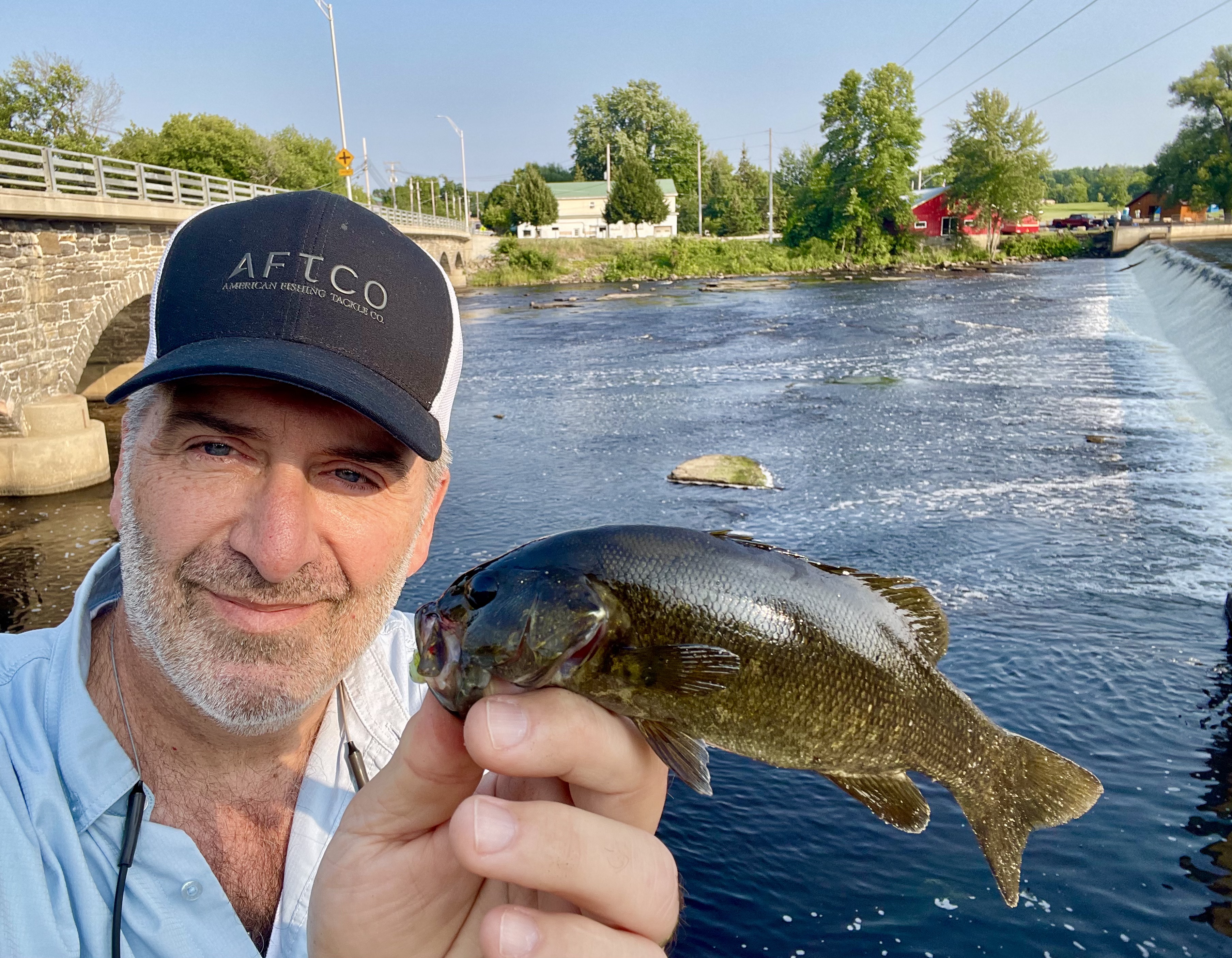
It’s one of the most dependable land-bound spots I’ve ever located — and seeing it at various water levels has deepened my understanding of, and appreciation for the impact rocky structure plays in the fishing success.
The location — the Grass River’s Madrid Dam, located in the Upstate New York town of Madrid. The Grass eventually flows into the St. Lawrence River, but just west of the Highway 345 Bridge, this tranquil flow passes an overflow edge and drops 12 feet to create a roaring tailrace.
A local park on the northwest bank has a small overlook with safety railing. From this location, I can make long casts into the roiling tailrace, or hit closer rock targets, as well as the corners of the dam’s two spillways.
The south side access offers a less effective angle, and while my northern vantage point is relatively tight, I have a full casting range that reaches from the dam to the bridge.
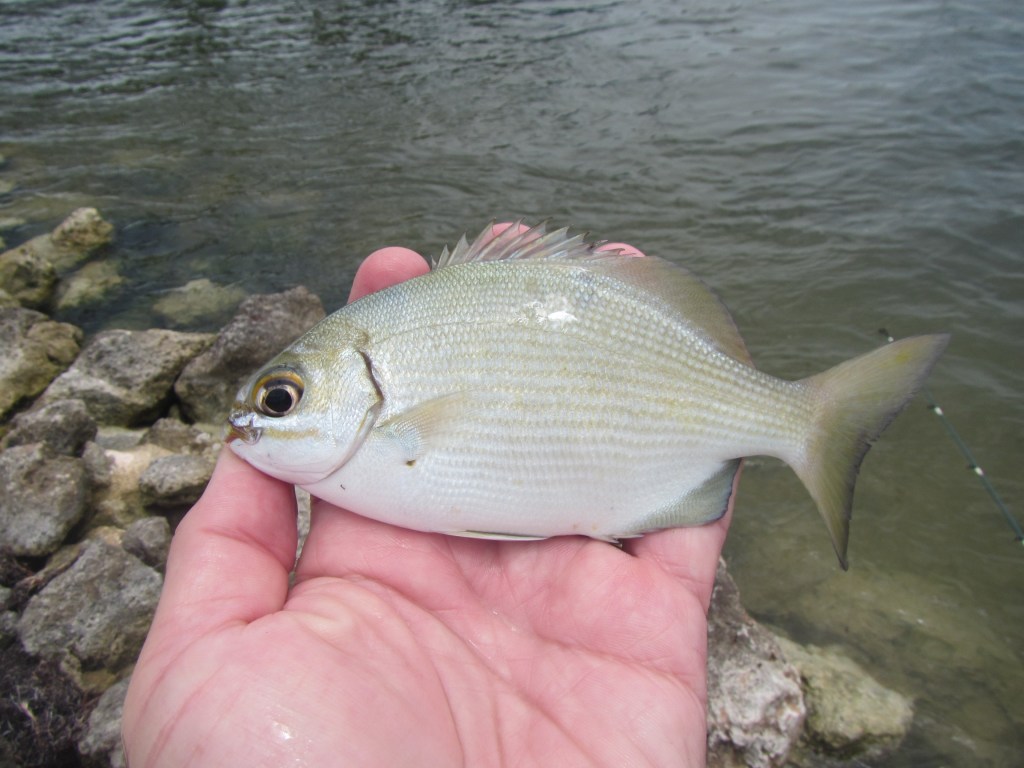
Find the Cast
I’ve fished this spot four times during trips to the St. Lawrence and, while I’ve caught smallmouth bass, rock bass and creek chubs at various spots, my biggest and most aggressive fish have always come from a prominent current break nearly at the end of my casting range. Here, the foamy current streaks bend around a major obstruction that has yielded many fish and claimed many of my baits.
This spot exemplifies what boaters seek in tailraces nationwide — spots where fish can sit in the downcurrent slack water and easily grab passing meals. Ideally, you want to position downstream of the water-deflecting structures, cast upcurrent and present your bait past the sweet spots.
From shore, your targets are fewer and your angles are usually more perpendicular, sometimes diagonal; but when you learn to “lead” your target and calculate the angles that utilize the current flow to sweep your bait past the sweet spots, precise presentations become very doable.
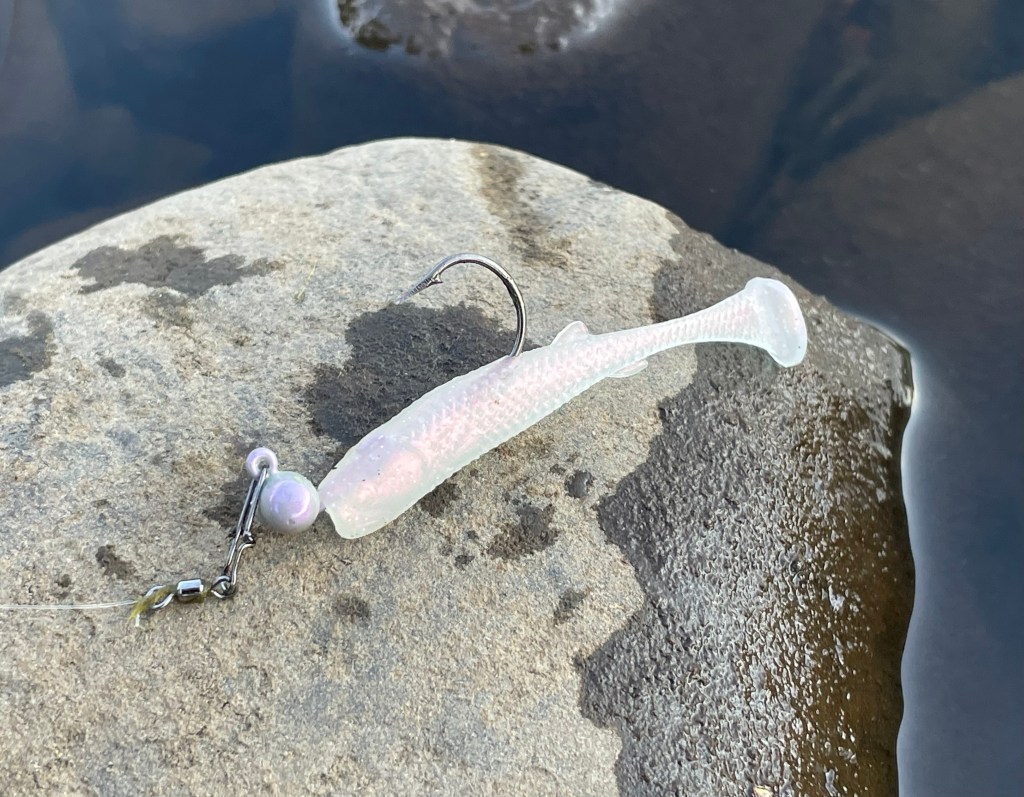
My three previous visits found the Grass River at normal to high stages, but during all conditions, I could clearly see the water breaking around that prominent rock structure. Most recently, I visited during a low water period when that broad chunk of river ledge sat high and dry.
This greatly diminished the number of fish relating to my go-to spot, but, the resulting visual observation spoke to a key angling principle — whether it’s a low tide or a low river, take every opportunity to observe your fishing spot and note the key depth changes, rocky obstructions and any submersed vegetation.
I’ll fish the Madrid Dam every time I visit the area, but I’ve found many other scenarios where natural and manmade rock structures offer angling opportunities.
Hard Times
Wherever you find reachable rocks with at least a couple feet of depth, you’ll usually find a variety of species leveraging the feeding advantage.

Riprap: Stacked rocks fortifying bridge causeways, marinas, etc. hold loads of crawfish and finfish forage. Bass anglers love this habitat because riprap banks are installed at an angle, so the fish can quickly adjust their depth simply by sliding up or down the rock wall. If you can find a stable footing, pick a section of riprap and work crankbaits, swimbaits or bladed jigs at a 45-degree angle along the rocks.
Start deeper and progressively move your retrieve higher along the rocks. This allows your bait more exposure in the strike zone, as opposed to an out-and-in perpendicular cast.
Coastal Jetties: Riprap also exists in saltwater scenarios and the rock piles protecting inlets offer one of your most fish-friendly scenarios. Working reaction baits along the edges is a good way to locate trout, redfish, snook, and striped bass (depending on your location), but don’t overlook the bounty of fish that live right next to the rocks.
While various snapper species, jacks and filefish frequent the jetty rocks, one of my favorite South Florida jetty tactics involves a double dropper rig with a slender weight, small hooks and fingernail size squid chunks. I’ll look for breaks in the rocks or flatter rock surfaces and tempt a fascinating array of damselfish, parrotfish, wrasses, and grunts. (Species mix varies by location, but there’s always some interesting fish hiding in and around jetty rocks.)
This works best on slow to slack tide periods. Otherwise, swift water will jam your rig into rock crevices.
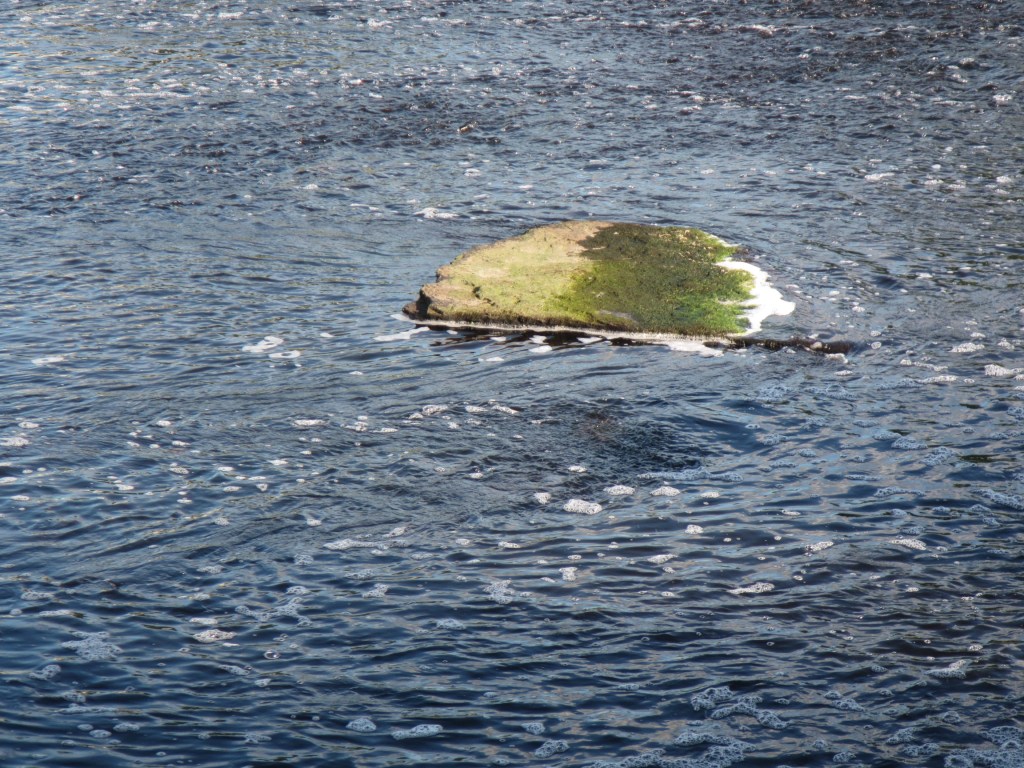
Boat Ramps: Kind of an honorary inclusion, this hard structure declining into the water gets covered in algae and that stuff attracts baitfish. Moreover, crawfish occasionally scamper along the edges and any peripheral rocks. Add to the food sources the cozy effects of hard surfaces absorbing and radiating the sun’s heat and you have a bona fide fish magnet.
The park adjacent to the Madrid Dam offers a single lane ramp and a short dock. Taking a break from the tailrace, I strolled to the ramp, made a few casts with a Z-Man StingerZ on a Micro Shad HeadZ. While I glanced toward the dam, a decent sized fish caught me napping, grabbed my jig and quickly shook loose.
Follow-up attempts failed, but the next day, I went directly to that ramp, worked the same jig along the ramp and nailed an 8-inch smallmouth bass. Not huge, but definitely fulfilling.
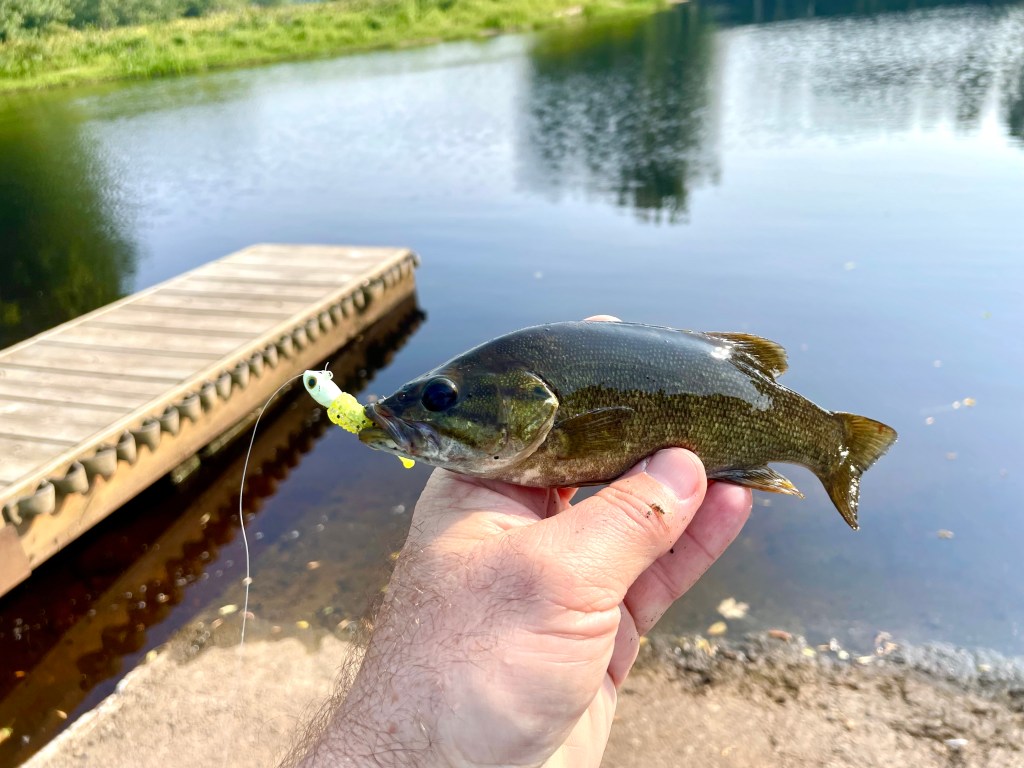
Small victories often shine the brightest.



